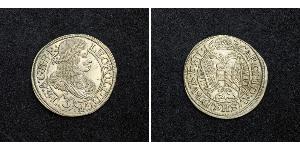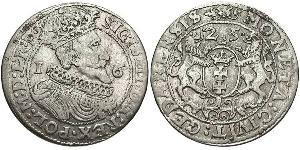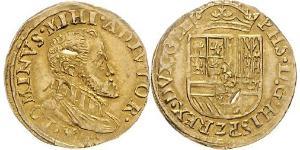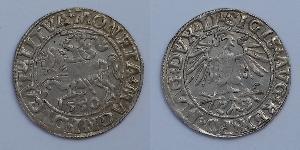(sold for $381.0)
1464, Bishopric of Utrecht, David of Burgundy. Scarce Gold Florin Coin. R!
Also known as a gold gulden or Saint Martin´s Gulden.
Region: Netherlands
Mint year: struck 1464
Mint Place: Bishopric of Utrecht
Bishop: David of Burgundy (1456-1496)
Condition: Areas flattness, otherwise VF.
Reference: Delmonte 945, Friedberg 190. R!
Denomination: Gold Florin (Florin d'or) - also known as St. Martin Gold Gulden
Diameter: 24mm
Weight: 3.36gm
Material: Gold!
Obverse: Standing draped figure of Saint Martin, holding crozier in left hand, right hand in benediction.
Legend: SANCTVS (shield) MARTIN : EPS .
Reverse: Shield of the Bishopric of Utrecht within trefoil.
Legend: + MON * NOVA * AVREA * TRAIECTEN '
The Bishopric of Utrecht is a Diocese based in the Dutch city of Utrecht. It was one of the Prince-Bishoprics of the Holy Roman Empire. The Bishopric of Utrecht continued as a state of the Holy Roman Empire from 1024 until 1528, when the secular authority and territorial possessions of the bishopric and its entire worldly power were secularized by Emperor Charles V. The diocese itself continued to exist as an ecclesiastical entity, and in 1559 was elevated to an archbishopric. By 1580 the Protestant Reformation in Utrecht and surrounding regions rendered impossible several attempts to effectively continue the ecclesiastical archdiocese, after the death of archbishop Frederik V Schenck van Toutenburg. The ecclesiastical archbishopric or archdiocese was reinstated in 1853 as the Roman Catholic Archdiocese of Utrecht by Pope Pius IX.
David of Burgundy (ca. 1427 in Atrecht – 1496 in Wijk bij Duurstede) was a bishop of Utrecht.
The illegitimate son of Philip the Good, Duke of Burgundy, he was made bishop of Utrecht by his father from 1456 to 1496 in an attempt to enforce more centralised Burgundian control over the Netherlands. He also served as bishop of Thérouanne from 1451 to 1456. He is the third longest-reigning bishop of Utrecht after Balderic and Willibrord.
David of Burgundy was bishop of Terwaan from 1451. Thanks to a joint effort between the Cods and Burgundy, he was appointed as bishop of Utrecht by the pope. The Utrecht chapters, however, had elected the Hook-favoured provost Gijsbrecht van Brederode as bishop. But Philip the Good forced the Nedersticht to accept David's appointment on 3 August 1456 at the treaty of IJselstein. The Oversticht had to be forcefully convinced as well. Deventer was besieged for five weeks before it surrendered.
But the opposition against him remained and therefore David left Utrecht in 1459 to settle in the newly acquired Wijk bij Duurstede, where he resided for the rest of his life. Thanks to Burgundian support and clever politics, his authority rose. Another effective measure was the creation of the Schive, a central court of appeal that was above city law. A breakthrough meant the capture of Gijsbrecht van Brederode and his brother Reinoud in 1470. This led to the First Utrecht Civil War (1470-1474), won by David.
Because of the Burgundian power of that time, David of Burgundy was one of the most powerful bishops in Europe. He appointed the schout, wrested criminal jurisdiction from the council, controlled the tolls and lessened the influence of the city on the farmlands.
But the death of his half-brother Charles the Bold in 1477 changed everything. David's politics led to a revolt of supporters of the Hook party in 1481. A new civil war erupted and David was captured. Maximilian I, Holy Roman Emperor had to intervene to free the bishop. David then reconquered Utrecht in the Battle of Westbroek, only to be driven out again in 1483. After the successful Siege of Utrecht, the revolt came to an end in 1483.
David's last years were focussed on restoring the financial situation that had been ruined by the civil war of 1481-1483, and balancing the influence of the Habsburgs, that had by then come to possess Holland, and Guelders. David died in 1496 and was buried in the church of Wijk bij Duurstede.
David of Burgundy was an artlover; he attracted artists to his court and gave a powerful impulse to the construction of the Dom Church in Utrecht. He modernised his residence, the Duurstede Castle at Wijk bij Duurstede, and he is also responsible for the large church there. The Museum Catharijneconvent holds a beautiful Cope of David of Burgundy.

|
Posted by:
anonymous 2016-02-18 |
791 coins were uploaded from 2024-04-17 to 2024-04-24
One of them is:
1 Solidus Byzantine Empire (330-1453) Gold Phocas(?-610)
group has 2 coins
⇑
















-300-150-pK3BwcI0jVgAAAEmztw6TOhH.jpg)






